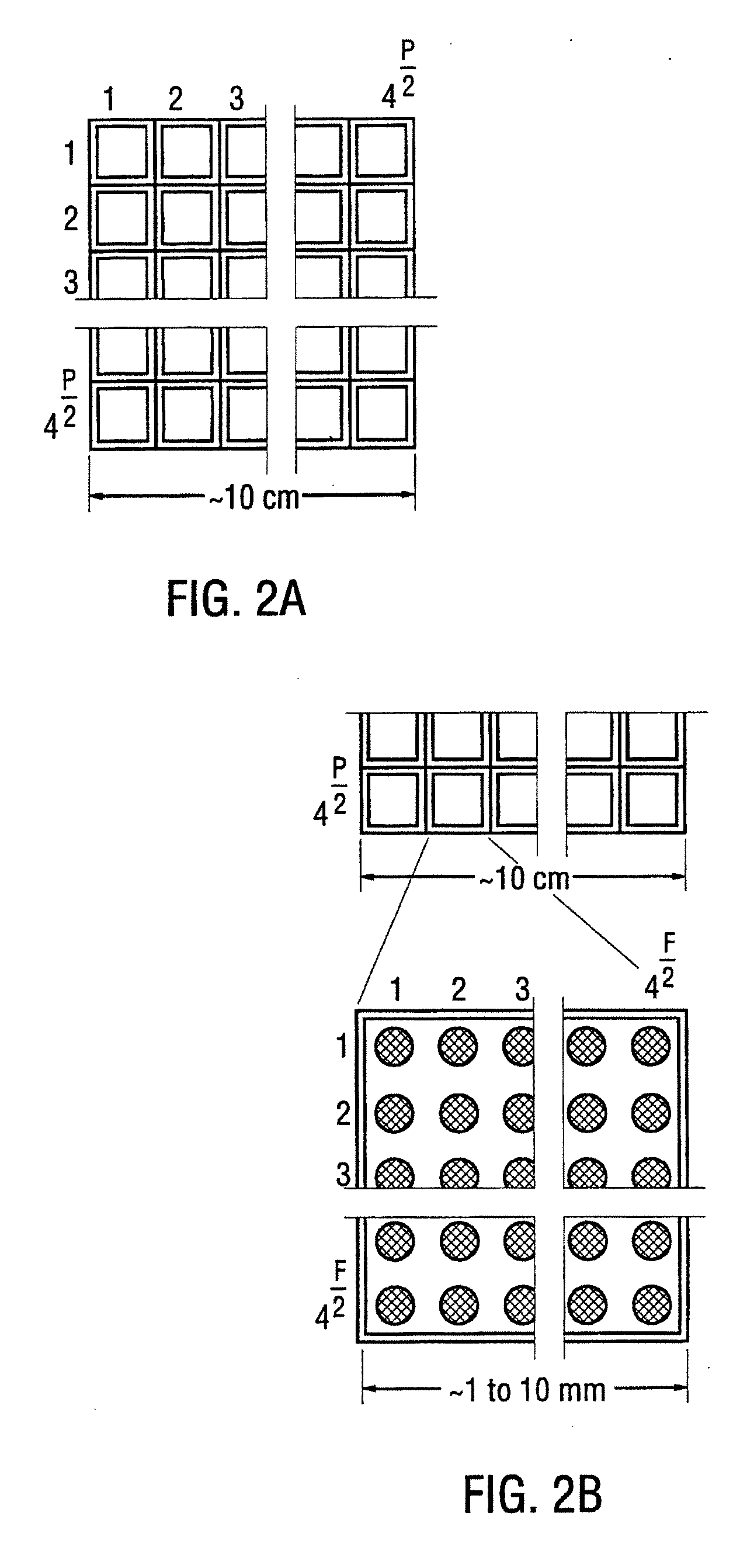Methods and Compositions for Efficient Nucleic Acid Sequencing
a nucleic acid and sequencing method technology, applied in the field of molecular biology, can solve the problems of slow and costly progress in this field, time-consuming and laborious both methods, and all current sbh methods still suffer from several drawbacks, and achieve high discriminatory sequencing
- Summary
- Abstract
- Description
- Claims
- Application Information
AI Technical Summary
Benefits of technology
Problems solved by technology
Method used
Image
Examples
example i
Preparation of Support Bound Oligonucleotides
[0080] Oligonucleotides, i.e., small nucleic acid segments, may be readily prepared by, for example, directly synthesizing the oligonucleotide by chemical means, as is commonly practiced using an automated oligonucleotide synthesizer.
[0081] Support bound oligonucleotides may be prepared by any of the methods known to those of skill in the art using any suitable support such as glass, polystyrene or teflon. One strategy is to precisely spot oligonucleotides synthesized by standard synthesizers. Immobilization can be achieved using passive adsorption (Inouye & Hondo, 1990); using UV light (Nagata et al., 1985; Dahlen et al., 1987; Morriey & Collins, 1989) or by covalent binding of base modified DNA (Keller et al., 1988; 1989); all references being specifically incorporated herein.
[0082] Another strategy that may be employed is the use of the strong biotin-streptavidin interaction as a linker. For example, Broude et al. (1994) describe th...
example ii
Modified Oligonucleotides for Use in Probes
[0103] Modified oligonucleotides may be used throughout the procedures of the present invention to increase the specificity or efficiency of hybridization. A way to achieve this is the substitution of natural nucleotides by base modification. For example, pyrimidines with a halogen at the C5-position may be used. This is believed to improve duplex stability by influencing base stacking. 2,6-diaminopurine may also be used to give a third hydrogen bond in its base pairing with thymine, thereby thermally stabilizing DNA-duplexes. Using 2,6-diaminopurine is reported to lead to a considerable improvement in the duplex stability of short oligomers. Its incorporation is proposed to allow more stringent conditions for primer annealing, thereby improving the specificity of the duplex formation and suppressing background problems or the use of shorter oligomers.
[0104] The synthesis of the triphosphate versions of these modified nucleotides is discl...
example iii
Preparation of Sequencing Chips and Arrays
[0112] The present example describes physical embodiments of sequencing chips contemplated by the inventor.
[0113] A basic example is using 6-mers attached to 50 micron surfaces to give a chip with dimensions of 3×3 mm which can be combined to give an array of 20×20 cm. Another example is using 9-mer oligonucleotides attached to 10×10 microns surface to create a 9-mer chip, with dimensions of 5×5 mm. 4000 units of such chips may be used to create a 30×30 cm array. FIG. 2A, FIG. 2B and FIG. 2C illustrate yet another example of an array in which 4,000 to 16,000 oligochips are arranged into a square array. A plate, or collection of tubes, as also depicted, may be packaged with the array as part of the sequencing kit.
[0114] The arrays may be separated physically from each other or by hydrophobic surfaces. One possible way to utilize the hydrophobic strip separation is to use technology such as the Iso-Grid Microbiology System produced by QA La...
PUM
| Property | Measurement | Unit |
|---|---|---|
| size | aaaaa | aaaaa |
| pH | aaaaa | aaaaa |
| concentration | aaaaa | aaaaa |
Abstract
Description
Claims
Application Information
 Login to View More
Login to View More - R&D
- Intellectual Property
- Life Sciences
- Materials
- Tech Scout
- Unparalleled Data Quality
- Higher Quality Content
- 60% Fewer Hallucinations
Browse by: Latest US Patents, China's latest patents, Technical Efficacy Thesaurus, Application Domain, Technology Topic, Popular Technical Reports.
© 2025 PatSnap. All rights reserved.Legal|Privacy policy|Modern Slavery Act Transparency Statement|Sitemap|About US| Contact US: help@patsnap.com



